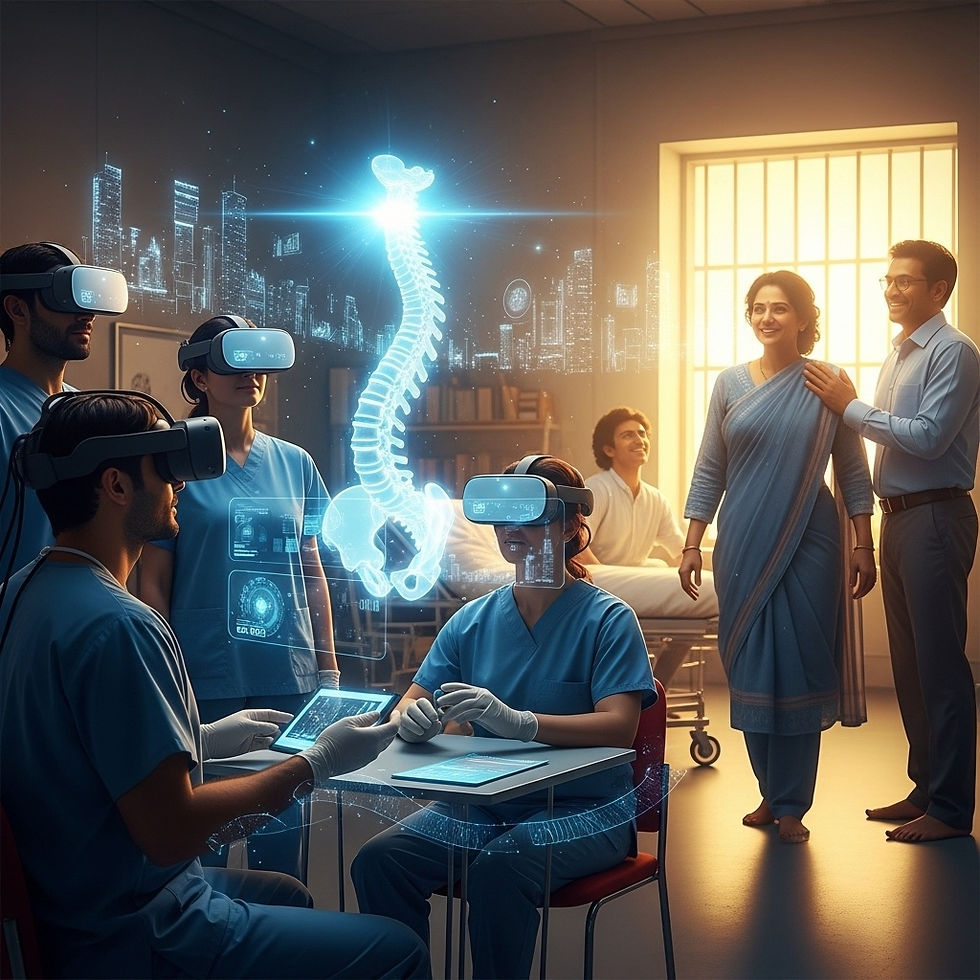Healing with Holograms: How Bengaluru Surgeons are Redefining Neurosurgery with Mixed Reality
- Eddie Avil

- Aug 21
- 2 min read

When technology meets compassion, even the toughest battles can be won.
When technology meets compassion, even the toughest battles can be won.
For 37-year-old IT professional Suprita AM, life turned upside down in mid-2024. Bedridden in the US with quadriparesis—a crippling weakness affecting all four limbs—she faced a grim prognosis. Surgeons across the ocean warned that an operation at the skull–spine junction could leave her permanently paralysed, or worse, dependent on a ventilator for the rest of her life.
Terrified but unwilling to give up, Suprita and her husband Kiran flew back to India in search of hope. They tried everything—second opinions, Ayurvedic remedies, homeopathy, posture therapies. Nothing worked. Each day felt like life slipping further away.
Until Bengaluru changed everything.
The Rare Diagnosis
At Aster Whitefield Hospital, specialists led by Dr. Satish Rudrappa, Director of Neurosciences and Spine Care, and spine deformity expert Dr. Ramachandran G, discovered the real problem: atlantoaxial dislocation, a rare instability at the top of her spine that was squeezing her spinal cord dangerously close to the brainstem. Surgery was the only option—but also the riskiest one.
And here’s where Bengaluru’s tech edge met cutting-edge medicine.
Mixed Reality in the Operating Room
Instead of entering surgery blind, Dr. Rudrappa’s team turned to Mixed Reality (MR)—a fusion of augmented and virtual reality. Using advanced MR headsets, they reconstructed Suprita’s spine as a 3D hologram hanging in space. The surgeons could “walk around” the spine, examine it from every angle, and even rehearse the operation virtually.
“It was like standing inside her anatomy before we ever touched her,” explained Dr. Ramachandran. “We were able to map out arteries, anticipate challenges, and prepare for every scenario.”
The technology didn’t just benefit doctors. For Suprita and her family, seeing the holographic model made the impossible suddenly understandable. “They didn’t just describe the surgery—they showed us where the compression was and how they would fix it,” said her husband Kiran. “That gave us confidence we had never felt before.”
From Bedridden to Reborn
The real surgery lasted five hours—meticulous bone repositioning and stabilization at one of the most delicate sites in the human body. By the next morning, Suprita was on her feet. Ten days later, she walked out of the hospital.
Back in the US today, she swims, cycles, and even plays volleyball. The only restriction her doctors placed? “Avoid rollercoasters,” she laughs.
Beyond One Patient: A New Era in Surgery
Dr. Rudrappa’s work with MR goes far beyond one case. His team at Aster has been pioneering India’s first use of Mixed Reality in spinal deformities and brain tumor surgeries, using holographic planning for:
Brain tumor treatment – mapping tumors against key functional areas like speech and motor centers.
Spinal deformity corrections – ensuring precise implant placement with fewer risks.
Intraoperative guidance – providing surgeons live 3D navigation during intricate cases.
Patient empowerment – helping families truly “see” a condition and the surgical roadmap.
At the heart of it all, Dr. Rudrappa emphasizes empathy alongside innovation: “Technology makes us more precise, but empathy makes us better healers. Patients need both.”





Comments